The NFT term has been around since 2014, but it hit the mainstream in 2021. It became known as a way to sell digital art online, with different factors supporting its popularity and value. The first ones were its connection to Metaverse and celebrities entering the scene. That’s the moment NFT sales reached mind-blowing digits. NFTs such as CryptoPunks changed the scene financially and creatively. So, how do NFTs work, and how do they gain these insane numbers and popularity?
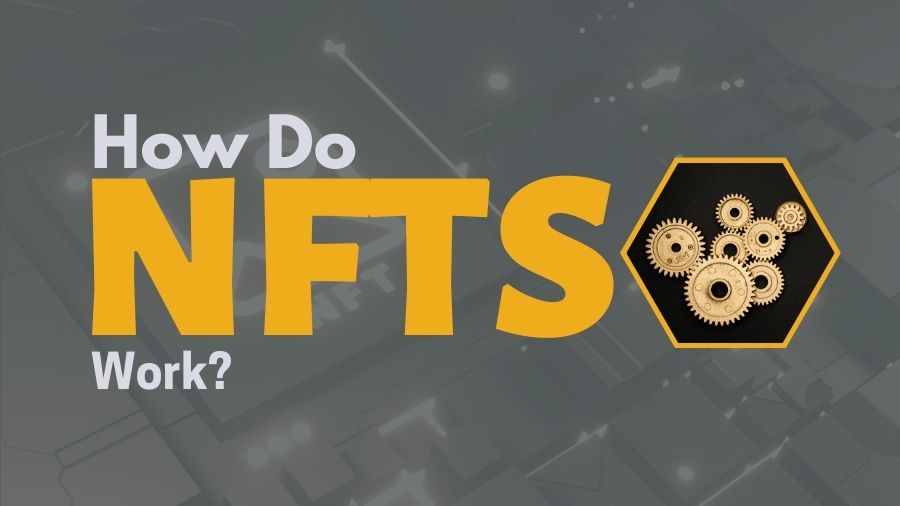
What are NFTs? Explanation of Non-Fungible Tokens and Their Worth
Technology is something that evolves in response to human demands. Throughout history, whenever humanity has faced difficulties, innovation has occurred. No one could have predicted the influence it would have, and the same was true of NFT’s inception.
It all started with cryptocurrency to decentralize the financial system independent of banks. As a result, traditional banks have the advantage of being insured. Crypto, on the other hand, is significantly more secure because it is built on the blockchain, and every single interaction is tracked and logged.
How are NFTs Stored on the Blockchain?
During the advancement of blockchain technology, one of the first cryptocurrencies to gain traction was Ethereum. It was also a platform for smart contracts linked to digital assets, allowing anyone to verify their validity.
These contracts are unhackable and cannot be altered. Hence NFTs or non-fungible tokens are digital assets tied to these contracts, which verify their authenticity. NFTs can be artwork, songs, poems, baseball cards, or any other asset that can be minted or created on the blockchain.
Minting refers to the process when an artist, for example, wants to create an NFT and have proof of ownership or authenticity. If you upload an image on the Internet, anyone can have access to it unless you set it on the website as not downloadable. That does not mean that someone will not attempt to screen capture this image.
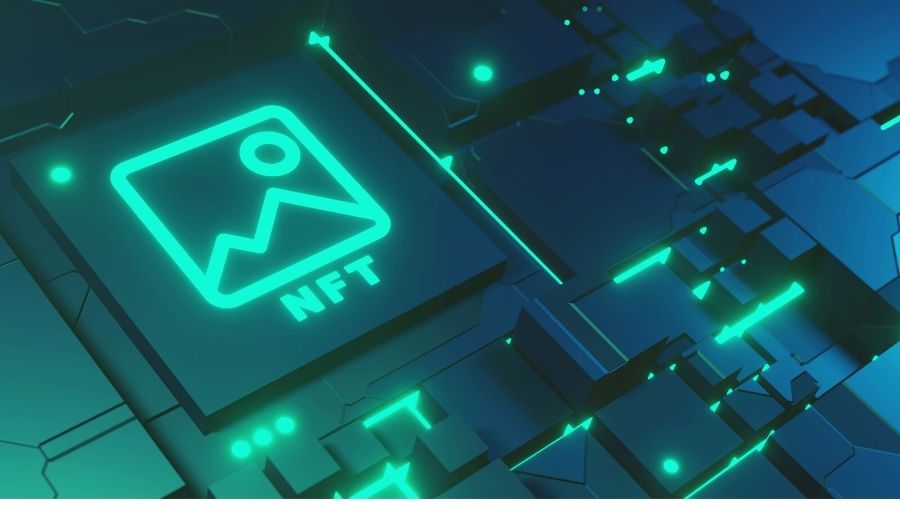
The artists make money with these images, whether a vector, painting, or photograph. That leaves them unprotected from artwork theft. Creating an NFT gives them exclusive rights to that artwork. How? Once they mint it on a blockchain, platform, or NFT marketplace, they can specify royalties which means if they decide to sell NFT, they will receive money from all future sales. They do not know the buyer, nor should they have any contact with them. Yet, they accept cash for life.
That’s impossible if the artist doesn’t create an NFT on the blockchain. In other words, it gives the artist protection over the rights and proof of authenticity to a buyer. Once they mint an NFT, they are given a specific link which is information tied to the particular asset with a smart contract of its own. It exists on the blockchain and following up on the link, anyone can see all past sales of that token.
If we speak of ownership details in terms of how NFTs work like that in the first place, we can take a look at the ERC-721 standard. This standard specifies the primary data such as ownership, details of the image, security, and metadata needed to distribute the token. There is also the ERC-1155 standard that specifies storage and transaction costs in a single contract.
Difference Between Cryptocurrency and NFTs
Essentially, NFTs are digital commodities that the public can buy with cryptocurrency. They are similar to money; only their value differs depending on the NFT itself. That means each of them is unique, and there are no two identical. In layman’s terms, you cannot exchange one NFT for another because they do not have the same value as Bitcoin.
NFTs are not a cryptocurrency like any other because they do not depend on the value of fiat money. Instead, they rely on the scarcity and demand for particular tokens or collections of NFTs. Let’s take a look at what a non-fungible token means.
Fungibility is an asset property that allows it to be interchangeable. For example, a $10 bill is worth the same amount as any other. In the end, it is the same amount of money. It is the same with crypto. For example, one Bitcoin is worth the same fiat money as another.
In simple terms, both bill and Bitcoin are fungible, or they will always have the same value and are tradable. On the other hand, we have NFTs that are one of a kind and irreplaceable by any other token. That’s thanks to that link or code logged onto the blockchain.
In addition, players can extend them. In some cases, such as in-game assets, you can breed a new unique NFT. For example, Solchicks it’s a crypto game where you own one-of-a-kind chicks. It is like Tamagochi, where you raise them and prepare them for battle. If you have two chicks, you can breed them and make a third one, also yours.
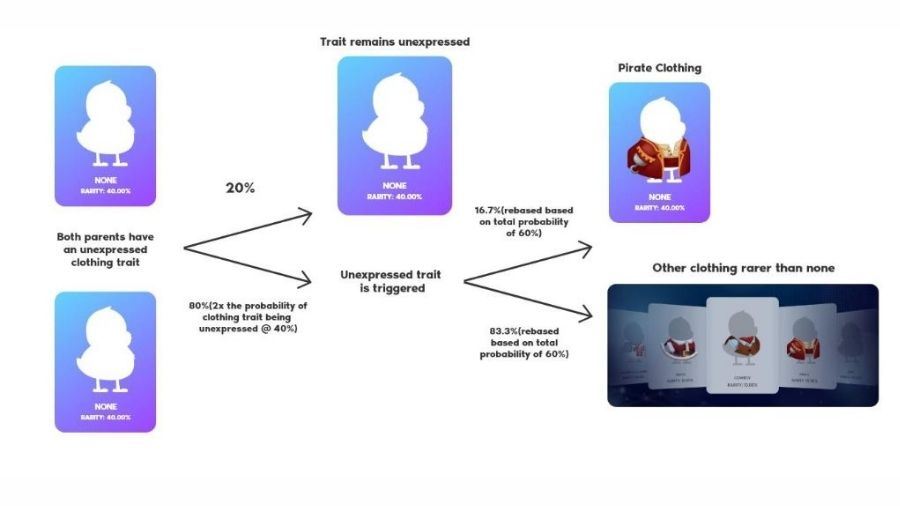
Why are People Interested in NFTs?
NFTs’ popularity has risen over the last few years. Before that, cryptocurrency purchases were the weirdest web trend. However, those days are long gone, and NFTs have taken the true meaning of bizarre on the Internet.
People are willing to buy these digital assets for games, passive income, or something else. Unfortunately, the word digital also means you cannot touch it, and it exists only in the virtual world. That fact confuses readers as to why people pay exorbitant amounts of money for something not physically present. That’s a tricky question to answer because it depends on the viewer’s point of view. We live in a half analog and part digital world, so it rests on the concept.
For example, you are willing to travel to Paris and the Louvre Museum to see the Mona Lisa. If you admire the painting, you might purchase a reproduction of the famous painting. You have it in your hands, but it is not real. If you are still following, it is the same with NFT. They are the real thing, but you cannot touch them.
So how bizzare can NFTs get? There was a moment when Twitter co-founder Jack Dorsey sold his tweet for $2.9 million. But, of course, that creates additional confusion—numerous examples of such enormous sums spent on something relatively trivial. However, not all NFT purchases are pointless.
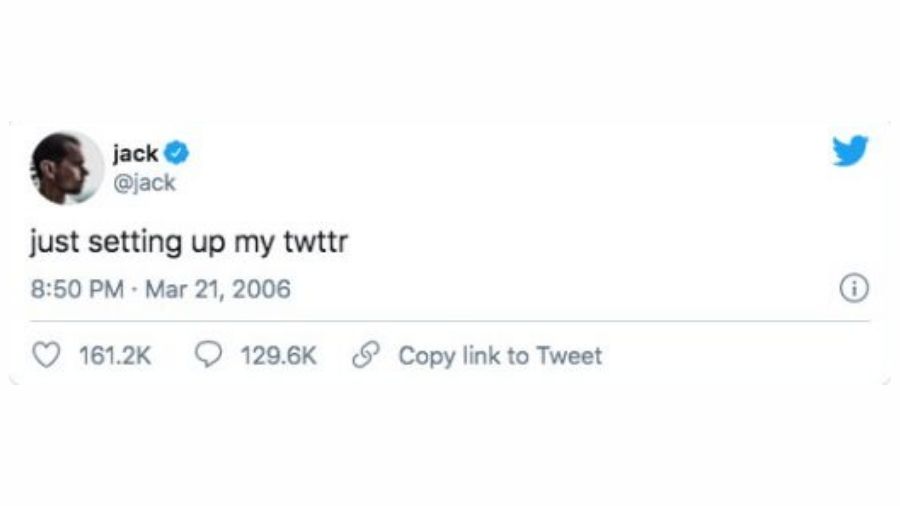
The gaming industry, for example, has allowed players to own the in-game assets they righteously won by playing the game. Artists can now have more protection on the Internet, and they are selling their unique pieces. In addition, people make passive income by investing small amounts of money into NFTs and flipping them.
How do NFTs Work Technically?
As mentioned previously, NFTs are one-of-a-kind cryptocurrency that operate on a blockchain. On the other hand, the blockchain serves to manage the digital information related to specific NFT. It is a ledger that records each token’s ownership and transaction history. NFTs have a unique ID or code and metadata that no other non-fungible token has.
NFTs are one-of-a-kind cryptocurrency tokens that are controlled on a blockchain. As a result, the blockchain serves as a decentralized ledger that records the ownership and transaction history of each NFT, which has a code and a unique ID, and other metadata that no other token can copy.
In simple terms, you can say that, in essence, they are tokenized digital contracts. When a person mints an NFT, they create a smart contract that enables users to prove ownership over a single NFT. That means they have ownership rights, and now they can sell them to collectors.
The same rule applies to collectors once they buy the NFT from the author. They have sole ownership rights. The token will still contain the author’s identity and the history of transactions, but there can be only one owner. Although that sounds like something from Highlander, the ownership is easily traceable on the blockchain.
Minting gives NFTs the attributes of scarcity and royalties for the author. The first is an essential factor in determining the value of each NFT, and the latter helps the author keep making money from the NFT in the future. That is how NFTs work in reality. They all have particular value, and some may be priced very high and some low.
How are NFTs Priced?
Most people are confused by the abstract concept of virtual value and scarcity. In truth, they do not have monetary worth, but they serve as a metric to decide on the value of an NFT. So, you could say that value for some NFTs is partly speculative. In the past few years, NFTs have grown in popularity as collectibles.
The best example is NFT games. Each asset or avatar exists in small batches, some reach up to 10,000, and that’s the top. So what that means is that their number suggests scarcity. It is similar to a concert when the artist and the management decide how many tickets they will sell. So in much the same way, the author chooses how many NFTs there will be in a single collection.
Although they are similar, they are never the same. For instance, if we look at the Bored Ape Yacht Club, each monkey seems identical to another one, but they are never the same. In visual terms, each NFT has a unique code to its name. So, the fewer tokens in the collection, the more scarce it is.
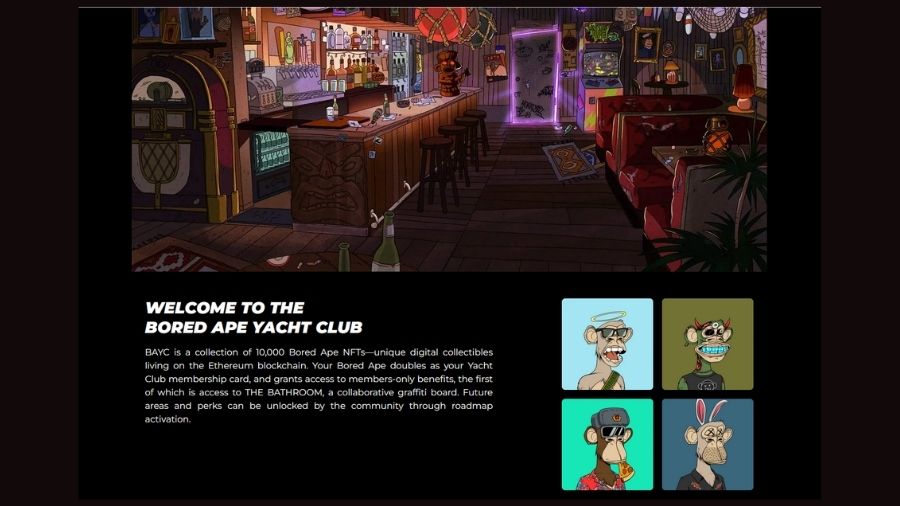
However, the value of NFT depends on two factors: demand and the author’s reputation. The request relates to anything from groceries to computers. It is the same as NFTs. People have to be interested in specific tokens for them to gain value. If no one wants the NFT, then it is not worth much. The truth is that renowned names in the industry will release the collection, and it will be famous, but that might be different for new artists.
There is a lot of marketing in the NFT collections. Artists build an audience on social media and Discord. However, even a big audience is never guaranteed that the NFT will surpass a specific value. That’s why we previously mentioned that the matter is partly speculative. It is like a viral post or video on social media, and you never know which one will take off.
Another factor is an artist’s reputation. For instance, at some point, everyone heard of graphic designer and illustrator Beeple, who made a name for himself by selling an NFT at Christie’s for millions of dollars. Naturally, that causes investors to jump in on all the fun. However, some make a passive income by investing in less expensive NFTs.
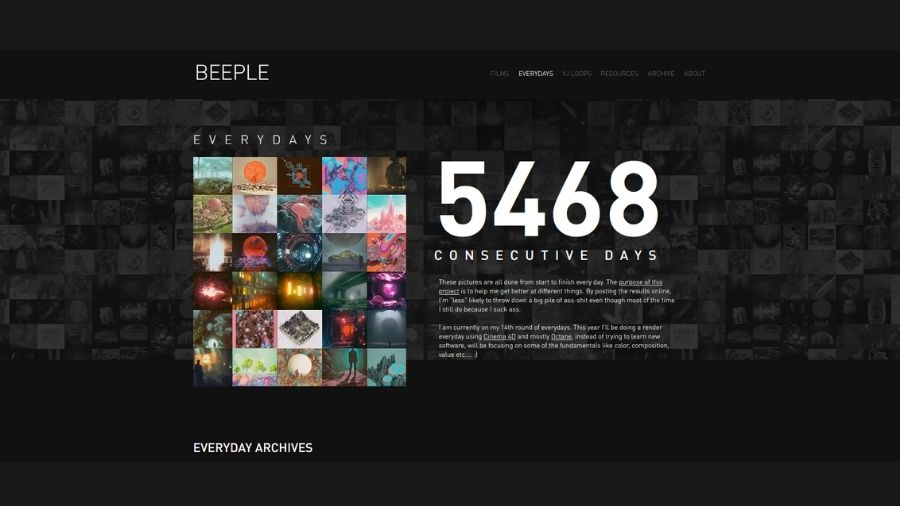
In short, each NFT has a particular value, and the uniqueness of the NFT determines that price. The piece’s price and authenticity, alongside originality, are how NFTs work. If you look at the famous NFT examples, such as Bored Ape Yacht Club, each one of them is a monkey portrait. However, some are more expensive than others. If you look at the prices, you will notice that some have more accessories, different backgrounds, etc. These differences are what make the price higher.
What Can You Do With NFTs?
The answer depends on whether or not you are an artist, a business, or just a fan of NFTs. Blockchain technology related to NFTs has allowed artists to create and sell their artwork to a broad public. Instead of mingling in the gallery, they can mint their work on a blockchain and sell them online. It allows the artist to offer their artwork to global audiences and make money off the royalties in the future. That is not possible in the real world.
However, it’s not just artists that utilize the power of NFTs. It has spread among gaming developers and renowned brands, who offer something extra to their fans. It is a well-known fact that the gaming industry utilizes the NFTs for-profit and keeps players engaged with their products. They allow players to own an in-game asset and trade with them on NFT marketplaces.
So what is considered an NFT? Well, there is a broad scope of what NFTs are. For example, they have various forms and can be:
- Arts and GIFs
- Sports videos and highlights
- Collectibles
- Avatars and video game skins are examples of virtual avatars and video game skins.
- Sneakers with designer labels
- Music
- Tweets, of course
How Picture NFTs Work for Artists: Exploring the Benefits of Non-Fungible Tokens
If you look at the past, players did not own digital art before cryptocurrency and blockchain. Instead, people shared photos and artwork online that were not traceable, which means that the artist placed the work on a website or platform. Meanwhile, people shared it with other sites without linking to the owner. Hence, the artist never got credit, and visitors used their images without consent.
It is similar to a stock platform: the artist gets the money, but the client receives only a license to use the image for different purposes. That doesn’t mean they own a painting. NFTs changed this concept because you can trace the token to the original artist, and whoever buys the artwork owns it as one-of-a-kind art.
Sure, there is still room to screenshot the NFT and save it as a JPG file, but you cannot sell it because the artist already minted it as an NFT and has an ownership document. In other words, the artist gets formal recognition for their work. non-fungible tokens allow artists to showcase and sell their work to a broader audience instead of just locally.
Some artwork comes with royalties, and the creator gets anywhere from 8% to 10% every time the piece is sold. The option mainly depends on the platform where artwork is sold. So be sure to inform yourself before submitting any artwork.
However, it is not all milk and honey in the world of NFTs because, if you notice, only the big names earn thousands or millions of dollars from their work. The artist’s reputation and self-branding play a vital role in the prices of NFTs. So, if you look at designers and lesser-known artists in the real world, they are trying to hold a steady income.
In other words, to make sure your art will sell, you have to connect and find an audience online. Like in the gallery, you will need marketing and promotion to showcase your work and be seen online. NFTs are a highly competitive industry, and many renowned artists define it as creating something meaningful that users cannot find in the real world.
It’s evident even in photography NFTs if you look; each collection tells a story and has a narrative based on a topic. The photographers are communicating with the viewers through the imagery. Recently Associated Press announced the sale of their historic photos from the archives. These NFTs are genuinely one of a kind telling stories from bygone times.
Perhaps the best part for creatives when it concerns unique tokenized art is how NFTs work because the creator has complete freedom to create anything they want. The majority of creatives struggle to complete the orders that they didn’t like to make in the first place. Hence NFTs are somewhat liberating the creative spirit because whatever artist made will be sold regardless of the topic or the color.
NFTs are a new way to monetize and categorize digital artwork. It’s a faster and easier process for the creator. However, as it is still in development, some legal issues are yet to be resolved. As it happens, some of the artists brought the public’s attention to their concerns regarding the legislation of NFTs.
Without the relevant protection of the law, their work is still susceptible to fraud and theft, especially for those who have them on their website. Since there is no proper legislation, there is no defense in the court, and the artist gets no compensation.
How NFTs Work for Music: How Decentralized Technology is Revolutionizing the Music Industry
NFT as a non-fungible token includes even music. It consists of a certificate of ownership of unique musical work that a musician can sell to another party. The owner of the music piece has the right to determine how this file is used, whether there is a single file, album, cover art, or videos accompanying the music.
As history tells us, music fans are a highly engaged audience, unlike art. Therefore, NFT music is a way for artists to broaden their reach and have more intimate contact with their fans. In the traditional sense, while launching a new album, artists would have to pay 50% of their earnings to lawyers, agents, distributors, or music-streaming services.
A tokenized album gives an artist a more significant compensation for their efforts. For instance, Mike Shinoda from the Linkin Park band sold his NFT for $11,000. But, according to him, even if platforms played the song around the world, he would never get that much compensation due to other expenses.
In addition, as music is something that needs collaboration on occasion, the NFT industry offers much greater freedom for artists to express themselves on joint projects.
It’s still early days for NFTs in the music industry, but it’s an exciting time for artists and fans alike, as the possible uses of this technology are just getting started.
- NFTs allow artists to receive more pay for their work.
- They also provide artists with more leeway to express themselves creatively.
- The usage of blockchain technology will enable artists to be more creative.
How do NFTs Work In Games And Gaming To Create A Better Experience
When you purchase an NFT, you buy a token representing a digital asset. This asset could be anything from artwork to an in-game object. NFTs have already begun to alter our perceptions of digital ownership and have the potential to have a significant impact on the gaming industry.
So, how exactly do NFTs function in games and gaming? Let’s take a closer look at this.
NFTs can be employed in a variety of game and gaming applications. They can, for example, be utilized as game items, awards, or even currency.
One prominent application for NFTs in games is as game objects. NFTs can represent everything from in-game materials to characters in this case. The popular game CryptoKitties, for example, allows users to gather, breed, and trade digital cats. It is similar to SolChicks.
Another application for NFTs is as rewards. In this case, NFTs can be utilized to award players for their in-game achievements. For example, in the game Gods Unchained, players can receive NFTs as a reward for playing the game and fulfilling specific tasks.
Finally, NFTs can be utilized as currency in video games. NFTs can be traded or swapped for other assets such as in-game items or other NFTs in this case. Decentraland, for example, employs a virtual currency known as MANA, which players may use to purchase in-game products or trade with other users. MANA is an ERC-20 token held on the Ethereum blockchain and works as an NFT.
So, NFTs can be employed in various ways in games and gaming. They have already impacted the gaming world, with popular games such as CryptoKitties and Decentraland incorporating them into their gameplay. As more developers continue to explore the potential of NFTs, we should expect to see even more innovative applications for them in the gaming arena.
The applications of NFTs in games and gaming are virtually limitless. And as additional developers investigate the potential of this new technology, we’re likely to see even more creative applications for it. So, if you want to stay on top of the latest gaming trends, keep an eye out for NFTs. They have the potential to be the next great thing.
Takeaway: Do NFTs Have a Future?
The potential for NFTs is vast. Some believe that they could eventually replace physical currency, while others think artists could use them to create digital art that is truly one-of-a-kind.
However, a few significant problems need to be solved before NFTs reach their full potential. For one, they are currently costly to create and transact. Additionally, they are not yet widely accepted by merchants or users.
Nonetheless, the future of NFTs is very bright. With the right solutions, they could revolutionize how we interact with digital assets and pave the way for a new era of digital art, music, and gaming.
NFT revolutionizes the gaming industry by allowing players to own their in-game assets and trade them freely on NFT marketplaces.
This provides a new level of freedom and ownership for gamers and opens up new economic opportunities for game developers. Furthermore, NFTs are not limited to games; players can use them for any digital asset, including art, music, etc. That opens up a whole new world of possibilities for creators and collectors alike.
Collectors and fans will be able to directly support their favorite artist or creator because blockchain transactions are direct and not mediated by a third party. The NFT market is still in its early stages, but it grows rapidly. Many major brands and organizations are already getting involved, and the potential for mainstream adoption is high.


